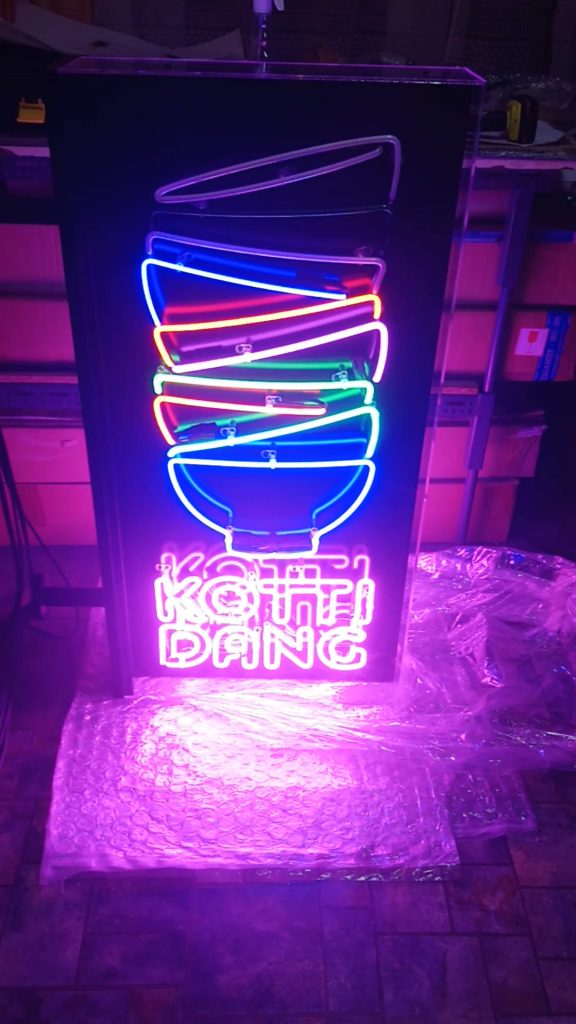
Technically about Neon
CONSTRUCTION AND OPERATION
Advertising neon lights are made of glass tubes, which are freely formed to give them the desired shape. It takes the form of an inscription, logo or graphic.
Then the tubes that make up the neon are filled with noble gas. After connecting the neon to the power supply, the current that flows through it knocks gas atoms out of their orbits. This causes the electrons to collide with each other, change their direction and return to their orbits. The effect of such movements is the creation of light energy, thanks to which the neon lights up.
WIDE RANGE OF COLORS
The color of the neon can be of different hues which are achieved in a variety of ways.
Neon from colorless tubes glows blue or red and is filled only with noble gas. Pure neon produces red light, while argon produces blue. In order to obtain other colors, the inside of the tubes is covered with phosphor (tubes with a milky color after extinguishing).
Neon lights are also made of colored glass. The light color effect is the resultant of the color of glass, gas light and phosphor. The advantage of neon advertisements made of colored glass is their decorativeness also during the day.
Neon lights are also made of colored glass. The light color effect is the resultant of the color of glass, gas light and phosphor. The advantage of neon advertisements made of colored glass is their decorativeness also during the day.
LONG-TERM SERVICE LIFE
The average lifetime of the neon lights is 80,000 hours. This gives us over 9 years of continuous lighting. If we take into account that the neon is not lit during the day or when the premises are closed, we create a beautiful advertisement for years. Contrary to LED diodes, traditional neon lights are not sensitive to weather conditions, therefore frost or heat do not shorten their lifespan.